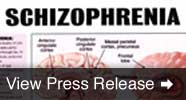
Case Studies
Axiom has provided the following in-depth case studies for your reference.
These case studies include patient recruitment campaigns in therapeutically diverse indications that were driven by very tight timelines, budgets, protocol criteria and unique patient populations. In each, Axiom met or exceeded sponsor expectations.
Case studies are based on actual Axiom designed and implemented recruitment campaigns that took place over the last few years. Where applicable, case studies summarize the following: Client Objective, Study Background, Campaign Strategy and Results Summary. An example of a press release and TV commercial may also be included.
Click on the indication-specific case studies below
to view details.
- Critical Limb Ischemia
- Asthma
- Bipolar Disorder (with Heavy Alcohol Use)
- Pediatric Bipolar Disorder
- Rheumatoid Arthritis
- Adult Bipolar Disorder (Depression/Mania)
- Cognitive Deficits in Schizophrenia
- Pediatric Autism
- Early Diabetes
Therapeutic Area: Cardiology
Ailment: Critical Limb Ischemia
Client Objective 
Assist study sponsor in building awareness for trial through a coordinated interface of program elements, including giving recruitment tools and materials necessary for 42 US sites to facilitate their own localized awareness initiatives.
Study Background
This study involved the recruitment of an extremely narrow patient population in a fragile health situation coupled with significant delays in site activation.
Campaign Strategy
- Develop and deploy a comprehensive recruitment awareness campaign over the course of roughly one year designed to build awareness and brand the study to the potential patient population, their caregivers and treatment network.
-
The initiative consisted of:
- Medical/Educational Referring/Awareness Mailings
- Media Awareness/Public Relations Program
Additional program elements included:
- Development, implementation and maintenance of a study-branded website and a study virtual call center
- Development, production and distribution of study-specific patient and professional brochures, and posters
- Study Team site/metrics
Results Summary
The recruitment awareness campaign was successful, as the sites were happy with the assistance provided by Axiom and credited the initiatives with having a strong impact in stimulating responses for each site.
The Media Awareness Campaign was particularly successful, resulting in 399 media inquiries, 183 media captures (postings, clippings, etc.), and 31 completed interviews in many of the top national media markets.
Therapeutic Area: Pulmonary/Respiratory Disease
Ailment: Asthma
Client Objective
Stimulate pre-qualified, measurable responses to ensure meeting randomized patient goal within the 120 days remaining in the study.
Study Background
End-of-study site fatigue and personnel turnover had created gaps in the recruitment efforts study-wide. The time of year, June through September, posed response challenges because of the summer season. A plan was needed to allow a household to respond at their leisure while meeting our timing needs.
Campaign Strategy
- Develop and implement a site-evaluation program to gauge the interest and ability of the current sites to participate in an accelerated recruitment effort.
- Develop and implement a “Site Enhancement” program to educate and generate excitement for the accelerated campaign.
- Develop a direct-to-household mailing campaign to pre-qualified, opt-in subjects within a specific geographic radius of the site. These pre-qualified, opt-in households have a higher propensity to not only respond, but complete the enrollment process.
- Utilizing an Axiom centralized web/interactive voice response system (IVRS) to track and screen responses, the qualified leads were forwarded to the sites every morning for follow-up.
Results Summary
Criteria |
Outcome |
|---|---|
| Total Number of IVRS Responses | 1,038 |
| Total Number of Web Responses | 484 |
| Total Number of Qualified Responses | 667 |
| Total Number of Unqualified (screened) Responses | 734 |
| Total Number of Randomized | 24 |
| Total Number of Screen Failures | 478 |
| Total Number of Qualified Respondents Unaccounted for | 167 |
| * Start Date June 2; First Mailing July 5; Last Mailing Sept. 5 | |
| Total Selected Sites (of 75 possible) | 42 |
| Total Mailed | 166,000 |
Statistics |
|
| Total Responses | 1,522 |
| Response Rate | 1% |
| Qualified Responses | 44% |
| Randomized Rate | 4% |
| Qualifieds Unaccounted for at Closure | 11% |
Therapeutic Area: Neurology/Central Nervous System
Ailment: Bipolar Disorder (with Heavy Alcohol Use)
Client Objective
Develop a pilot program to test direct-to-subject methods for responsiveness and pre-qualification screening of this unique, dual-diagnosis population.
Campaign Strategy
- Compile a database and develop a pre-qualified, opt-in, direct-to-household mailing campaign to a specific geographic radius of the site.
- These pre-qualified, opt-in households have a higher propensity to not only respond, but complete the enrollment process.
- Utilizing IVRS (Interactive Voice Response System) and
web methodologies to pre-qualify and refer subjects to the corresponding sites. The Study Team had real-time reporting capabilities to monitor the results.
Results Summary
Criteria |
Outcome |
|---|---|
| Unique Visits to the Web Site | 147 |
| Phone Responses (IVRS) | 231 |
| Total Contacts | 378 |
| Net Pre-qualified Subjects sent to the Investigative Sites | 81 |
Therapeutic Area: Neurology/Central Nervous System
Ailment: Pediatric Bipolar Disorder
Client Objective
Stimulate awareness of this branded study to reinforce and stimulate the sites activities in the screening and referral of pre-qualified subjects for this trial at the site level.
Study Background
This difficult-to-reach patient population required educating not only caregivers but medical professionals and the community about the often misdiagnosed ailment of adolescent bipolar disorder.
Campaign Strategy
Customize a 12-month initiative, from the investigator site market perspective, through the interface of team members to identify individual and geographic opportunities unique to each of the 35 markets/sites.
A three-tier approach was identified by the Team for this recruitment initiative:
- Medical/Educational Referring/Awareness Initiative
- Community Awareness/Public Relations Program
- Investigator Community Outreach and Site Fulfillment
Additional program elements provided by Axiom:
- Development, implementation and maintenance of the study-branded web site
- Development, implementation and maintenance of the study virtual/live call center
- Coordination and production of bilingual informational brochures and posters
Results Summary
Criteria |
Outcome |
|---|---|
| Unique Web Responses | 837 |
| Phone Responses (IVRS) | 583 |
| Total Contacts | 1,420 |
| Net Pre-qualified Subjects sent to Investigative Sites | 181 |
Therapeutic Area: Rheumatology
Ailment: Rheumatoid Arthritis
Client Objective
Stimulate screenings to ensure meeting ‘last patient in’ date which was only eight weeks away.
Study Background
Centralized recruitment initiatives through print and broadcast had generated a large volume of calls from unqualified subjects, putting an extreme burden on the site personnel.
Campaign Strategy
- Develop a direct-to-household mailing campaign to pre-qualified, opt-in subjects within a specific geographic radius of the site.
- The pre-qualified, opt-in households have a higher propensity to not only respond, but complete the enrollment process.
Results Summary
The number of screened, qualified individuals was reached within a
five-week period which allowed the study to be completed as planned
with site satisfaction.
Specifics |
|
|---|---|
| Sites | 18 US markets |
| Total Households Contacted | 178,303 |
| Timing | January and February |
Therapeutic Area: Neurology/Central Nervous System
Ailment: Adult Bipolar Disorder (Depression/Mania)
Client Objective
Stimulate awareness and recruitment for this branded dual study, needing approximately 95 sites to recruit/enroll over 500 patients between the two trials.
Study Background
This difficult to recruit patient population required a unique strategy of education, awareness and direct-to-subject methodologies. The sponsor anticipated that 50% of the participating sites would “opt-in” to participate in this recruitment initiative.
Campaign Strategy
Maximize site participation in a three-tiered recruitment strategy, designed with input from the sponsor and site focus group input over a twelve-month period.
The initiative consisted of:
- Medical/Educational Referring/Awareness Mailings
- Community Outreach/Public Relations Program
- Television Advertising (customized site-based “On-Demand” ads, as well as a focused centralized campaign)
Additional program elements included:
- Development, implementation and maintenance of a study-branded web site and a study virtual/live call center
- Development, production and distribution of study-specific patient and professional brochures, posters and referral pads
- Investigator meeting participation
- Study Team Web Site with metrics.
For an example, click here.
Results Summary
Over 95% of the sites opted-in to participate when only 50% participation was expected in this recruitment initiative. Additionally, the Axiom strategy resulted in over 2000 unique qualified responses that helped the sponsor enroll the necessary amount of patients earlier than expected, resulting in the closure of each study more than three months ahead of schedule.
Therapeutic Area: Central Nervous System
Ailment: Cognitive Deficits in Schizophrenia
Client Objective 
Stimulate awareness and recruitment for a study researching cognitive deficits in schizophrenia among adults at 40 US sites.
Study Background
This unique research study involving a traditionally difficult to recruit patient population, required employing a robust, multi-faceted strategy to generate the response desired by the study team.
Campaign Strategy
- Employ a comprehensive recruitment campaign over a period of eight months designed to build awareness, generate a steady response funnel, and brand the study nationally to the mental health community.
-
The initiative consisted of:
- Medical/Educational Referring/Awareness Mailings
- Community Awareness/Public Relations Program
- Television Advertising (centralized)
Additional program elements included:
- Development, implementation and maintenance of a study-branded website and a study virtual call center
- Development, production and distribution of study-specific patient and professional brochures, and posters
- Study Team site/metrics. For an example, click here
Results Summary
The combined recruitment initiatives exceeded expectations by creating an immediate response to the web/IVR intake platforms. 1,659 unique users visited the study website, while 943 called the study 800 number for more information. From these responses, 406 pre-qualified referrals were sent to the participating study sites.
The Media Awareness Campaign was also extremely successful, resulting in 308 PR inquiries, 26 confirmed news clippings, 142 confirmed web postings, and 21 interview requests.
Therapeutic Area: Central Nervous System/Neurology
Ailment: Pediatric Autism
Client Objective
Generate awareness and responses in support of an autism study in children at a single US site.
Study Background
This investigator-sponsored study was behind in enrollment, resulting in the need for a quick stimulus for recruitment against a compressed study timeline.
Campaign Strategy
- Develop and deploy a comprehensive recruitment awareness campaign over the course of roughly three months designed to build awareness and generate responses to fill the recruitment funnel.
-
The initiative consisted of:
- Outreach/Mailing Campaign to Local Mental Health Resource Centers
- Media Awareness/Public Relations Program
Additional program elements included:
- Development, implementation and maintenance of a study-branded website and a study virtual call center
- Development, production and distribution of study-specific patient and professional brochures, and posters
Results Summary
The principle initiative in the campaign, media awareness/public relations, was extremely effective, resulting in 1458 reads and 101,912 impressions, and 56 online postings in major media in the supported market.
Therapeutic Area: Cardiology
Ailment: Early Diabetes
Client Objective 
Quickly stimulate pre-qualified, measurable subject referrals to fill the potential patient funnel goal within the 60 days prior to LPI (last patient in).
Study Background
The protocol had very difficult inclusion/exclusion criteria that required in depth pre-screening prior to first visit. Even at the first visit, screen fail rates exceeded 50%.
In the rescue mode, a plan was needed to allow the sites to get the best-qualified referrals quickly and cost-effectively within the 60 day window.
Campaign Strategy
- Develop and implement a site-evaluation program to gauge the interest and ability of the current sites to participate in an accelerated recruitment effort.
- Develop and implement a pre-qualification/screened lead to site delivery system that would accommodate the needs of the selected sites. Axiom employed a ‘warm’ phone transfer, encrypted fax and email system with individual site follow-up calls.
- Develop, implement and support a centralized market and individual site media plan in support of up to 55 investigative sites nationwide.
- Utilizing an Axiom centralized web site and interactive voice response system (IVR) to track and screen responses, the qualified leads were immediately processed 24/7 with real-time trackable metrics available to the study team and their stakeholders
Results Summary
Criteria |
Outcome |
|---|---|
| Number of unique visits to the web site: (Number of individual users to the web site) |
812 |
| Total usage hits to the web site: (Number of click-through’s by an individual user) |
3,077 |
| Total number of IVR calls: (Number of calls received by the IVR system) |
1,078 |
| Total number of IVR responses: (Number of calls resulting in a qualified response) |
120 |
| Average Total time spent on IVR pre-qualification (Time spent reviewing and answering detailed screening questions) |
13.36 min |
| Total number of WEB responses (Number of visits to the web site resulting in a qualified response) |
104 |
| Total number of Qualified Referrals sent to Sites: |
224 |